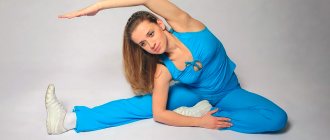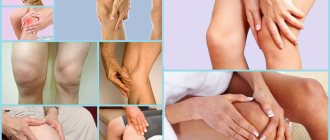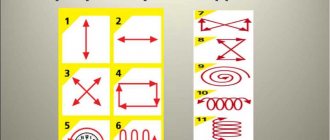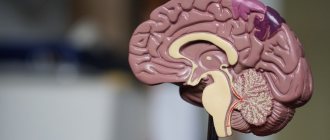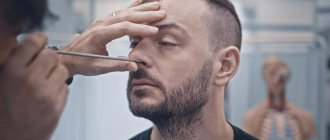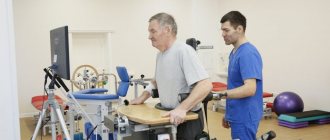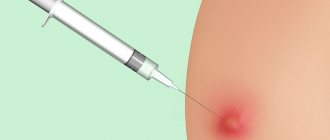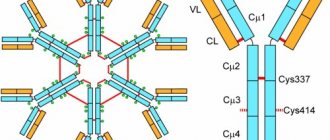COVID-19 is not just a type of flu. This disease affects the lung tissue, similar to pneumonia. The disease is characterized by the presence of additional symptoms: loss of smell and taste, fever, a feeling of pressure in the lungs and difficulties with normal breathing. Thanks to the efforts of doctors and scientists, 90% of all people infected with coronavirus recover.
Regardless of the type of treatment (outpatient or inpatient), doctors offer assistance only until the patient’s symptoms disappear. Returning to your former life, restoring the ability to breathe deeply, smell and taste are the concerns of everyone individually. Breathing exercises for pneumonia and corona, listed below, will help you restore lung capacity and minimize the damage from the illness.
Is it possible to do breathing exercises while sick?
Increased stress on the respiratory system during the course of the disease is not recommended for those who feel severe weakness or are in very serious condition. In all other cases, breathing exercises for pneumonia will help remove mucus and saturate the tissues with oxygen, which will have a positive effect on the patient’s well-being. When performing exercises, you need to take into account a number of features:
- If training the respiratory system is performed for prevention, any methods are allowed, but you should not overdo it and make yourself dizzy.
- If the disease is easily tolerated, breathing exercises are allowed, but exercises that place increased pressure on the lungs at the end of exhalation should be avoided.
- If the illness was difficult to bear, but the patient began to recover, his training program includes the most gentle exercises aimed at increasing the volume of the lungs, as well as restoring the ability to take a deep breath.
Before starting the exercises, you need to sit on a chair next to any supporting surface (table or wall), put a napkin nearby to spit out the sputum.
Physiotherapy
The following procedures help improve lung function:
- electromagnetic therapy (high frequency to relieve inflammation or pulsed to relieve pain);
- SMT therapy using sinusoidal modulated currents relieves spasms and improves drainage function;
- ultrasound therapy to relieve spasms and facilitate mucus discharge;
- inductothermy to destroy pathogenic microorganisms;
- polychromatic polarized light, which reduces the viscosity of sputum, promoting the resorption of scar tissue in the lungs.
Why do you need to do breathing exercises?
After completing the course of treatment, the patient remains weak, shortness of breath, a slight cough, and difficulty breathing.
Exercises to restore the lungs can be done in bed (in especially severe cases). It is recommended to exercise for at least 10 minutes every day, but monitor your condition. If breathing is too difficult, it is allowed to conduct classes every other day with a minimum load and gradually increasing it. The main advantages of oxygen gymnastics after the “crown” are:
- Saturation of blood and tissues with oxygen;
- Restoring lung volume;
- Clearing the respiratory tract.
Additional benefits from constant training of the pulmonary system include improved performance, relief from shortness of breath, and the inclusion of all parts of the lungs.
Oxygen therapy
Along with drug therapy and the measures listed above, oxygen therapy using oxygen concentrators is actively used. The devices help eliminate hypoxemia (lack of oxygen in the blood).
An oxygen concentrator captures air from the environment, passes it through a filter, releasing pure oxygen from the gas mixture, which is supplied to the patient's respiratory tract through a mask or nasal catheters (cannulas).
Some models of oxygen concentrators can additionally humidify oxygen.
Lung training for coronavirus: indications and contraindications
Doctors call body temperature above +38°, as well as fever, the only contraindication to exercise. According to a number of opinions, you should refuse training if you feel unwell, dizziness, nausea. There are no direct indications for performing the training - it will be useful for every group of participants:
- People with healthy lungs can perform gymnastics for prevention;
- Athletes often train to increase lung capacity, which provides an endurance advantage regardless of the discipline being practiced;
- For diseases of the respiratory tract, lungs or cardiac system, therapeutic exercises improve bronchial patency.
Those who seriously care about their health are recommended to include breathing exercises in their morning exercises or perform them before training in the gym.
Breathing exercises for home: a complete set
Perform all the listed exercises one after another. If you feel weak and dizzy from hyperventilation, you can take a short break for 3-5 minutes and restore your normal breathing rate. Spend 10-15 minutes training 2-3 times a day, if necessary, you can do longer.
Relief from phlegm
Exercise helps you clear your throat and clear your airways for oxygen, which will actively enter the body during exercise.
- Sit on a chair with a flat back; if you feel weak, do the exercise lying on your side.
- Press a pillow, folded blanket or other soft, voluminous object against your stomach and round your back around it.
- Inhale slowly and deeply, feeling the stretch in your chest between your ribs.
- Do not fight attacks of coughing - spit the phlegm into a tray or onto a prepared napkin.
Do the exercise several times until you feel that you can breathe easier. When you cough, press the pillow harder against your stomach, this will help cope with the pain.
Breathing from the diaphragm
Exercise will help saturate the posterior lower lobes of the lungs, which are most affected by coronavirus, with oxygen.
- Lie on a flat, hard surface on your back, bend your knees, and let your feet touch the floor completely.
- Place your palms on your stomach just below the ribs - this will help control the quality of the exercise.
- Inhale slowly through your nose so that your upper chest remains motionless and your stomach rises.
- Hold your breath for a few seconds, feel the stretch in the intercostal space.
- Exhale through your mouth, pulling your stomach toward your spine as you exit.
Repeat the exercise 5-7 times and move on to the next task.
Swing your arms and shoulders
Warming up the shoulder girdle is especially useful for those who often slouch. Constantly rounded shoulders over time lead to deformation of the chest and reduce lung capacity.
- Stand straight with your feet shoulder-width apart or take a straight position while sitting on a chair.
- Place your hands on your shoulders and make rotational movements, first forward, then back.
- Make 10-15 turns in both directions and spread your arms.
- Move full circles forward and backward with straight arms. Try to draw a circle with as large a diameter as possible.
- If you find it difficult, start with a small circle and increase the radius over time.
While moving your arms, take a slow, deep breath in deeply, and while pausing, exhale.
Reduction of the shoulder blades
This exercise will help you get rid of slouching, straighten your chest, and teach you to breathe evenly and deeply.
- Sit on a chair, straighten up, place your feet flat on the floor, and place your hands loosely on your hips.
- Squeeze your shoulder blades together, straightening and stretching your pectoral muscles. While mixing, slowly inhale the air; you should feel your lungs filling with oxygen.
- Hold the pose for 5-10 seconds and exhale, return to your normal position.
Breathing exercises with stretching of the thoracic spine
The exercise is performed lying down, sitting or standing - it is important that the back is straight at all times and the shoulders are turned.
- Raise your arms above your head; for convenience, you can cross them into a lock.
- Stretch your entire body up and back, stretching your chest.
- As you stretch, inhale slowly and hold your breath at the top.
- Exhale and lower yourself to the starting position, repeat the exercise 5-10 times.
Diet
The patient should eat a lot of fruits, vegetables, cereals, and easily digestible proteins. However, it is not recommended to go on low-calorie diets.
The diet must include:
- boiled or steamed chicken, turkey, rabbit, veal;
- eggs and cottage cheese;
- fatty sea fish, nuts, vegetable oil (which contain fatty acids);
- fiber-rich fresh vegetables and fruits;
- natural yogurt, kefir (as a source of probiotics);
- buckwheat porridge, chicken or beef liver (as a source of iron).
It is better to avoid drinking black tea and coffee or reduce it to a minimum. You can drink compotes, fruit drinks, herbal teas, rosehip or sea buckthorn decoctions.
You need to eat fractionally, 4-5 times a day, in small portions. During rehabilitation, you need to give up foods that are too salty, sweet, spicy, or smoked.
In some cases, based on the results of a blood test, the doctor may prescribe vitamins and microelements.
How long will it take to restore the respiratory system?
The duration of the rehabilitation period depends on a number of factors:
- The patient's initial health status;
- The severity of the disease;
- The presence or absence of treatment, as well as auxiliary recovery procedures during illness;
- The ability of the immune system to return to its previous state, etc.
Russian pulmonologists recommend practicing exercises to improve breathing for at least three months after the illness. The main danger of Covid-19 is its unpredictability and ability to mutate, creating new strains. This does not exclude the possibility of reinfection even for those who are already immune to the disease or have been vaccinated.
If you perform therapeutic exercises for the lungs not only during the period of exacerbation of the disease or for prevention, but spend 15-20 minutes daily, this will help you easily cope with the disease and get back to work faster. Additionally, it is recommended to do exercises to stretch the spine in the thoracic region.
Recovery after Covid: video
Perform one or more complexes at a time convenient for you. If possible, it is better to train outdoors or in a well-ventilated area.
- A set of breathing exercises after Covid.
- Exercises for morning exercises or warm-up before training.
- A set of exercises for those who suffer from pneumonia or “corona”.
Don't skip classes and don't rush through them. You should not start training immediately after eating or drinking heavily; before gymnastics, get rid of tight clothes.
Security mode
After a person has had coronavirus, their immunity remains weakened for several weeks, and the risk of getting ARVI again increases significantly.
At this time, it is important not to overcool or overheat (dress appropriately for the weather), avoid crowded places if possible, spend more time in the fresh air in sunny weather (vitamin D produced in the sun significantly improves well-being and increases the body’s resistance to new infections).
